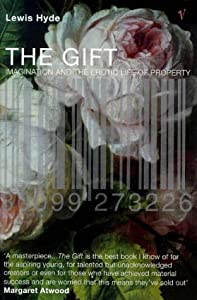In our recent discussion about art and commerce, I made a point of expressing my distaste for one way that some artists have sought to earn a living recently--giving away their art in order to sell merchandise. I concurred with Tony Comstock in finding that business strategy ugly at best.
You might think, then, that I would hate Camille Paglia's recent WSJ column, "How Capitalism Can Save Art." But you would be wrong.
Paglia’s is concerned about a lack of “creativity and innovation” in studio art. She accuses artists of living in “an airless echo chamber” of liberal political orthodoxy and of perpetuating a pseudo-provocative avante garde. In short, Paglia’s complaint about contemporary art is that it fails to engage generously and openly with a wide audience.
This might seem a problem altogether different than the disappearance of art into marketing that I identified. Indeed, one might argue that the problems are diametrically opposed. Yet I would argue that the same failure lies at the root of both fine art’s stagnation and popular art’s selling out: the failure of the work to be a gift.
Lewis Hyde has best traced the nature of art as gift in his beautiful book The Gift (the book has had various subtitles over the years; for my money the best one is the original, Imagination and the Erotic Life of Property). Hyde argues that any art must contain an element of gratuity, a value which exceeds the monetary. When artists do their work, they often feel that something in it arrives from beyond them: inspiration, the Muse.
That element of givenness, Hyde says, remains with the work of art even if the work enters into the capitalist marketplace—for the art buyer receives something from the work far beyond the purchase price. What price would we take, after all, for our first experience of a beloved book? A work of art can thus be both gift and commodity. However, this balance can be upset: Hyde insists that “a work of art can survive without the market, but where there is no gift there is no art.” Harlequin romance novels, he notes, are market researched from cover to cover, thus losing the gift of art due to their commerce-driven manufactured status.
Reading Paglia from this position, we might be tempted by her polemical title to think that she proposes artists subsume the gift to the profit motive. However, this would be a profound mistake. The core of her proposal for the rescue of art lies here:
Login to read more
Sign in or create a free account to access Subscriber-only content.
Topics:

